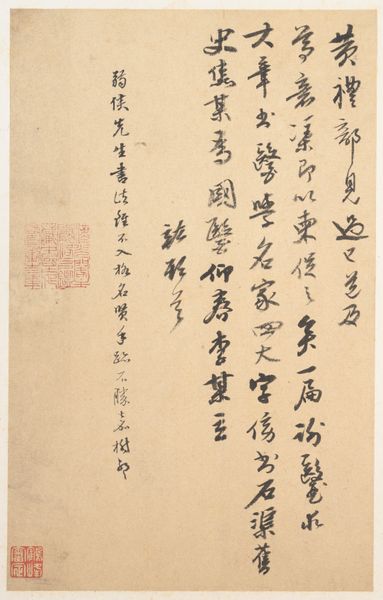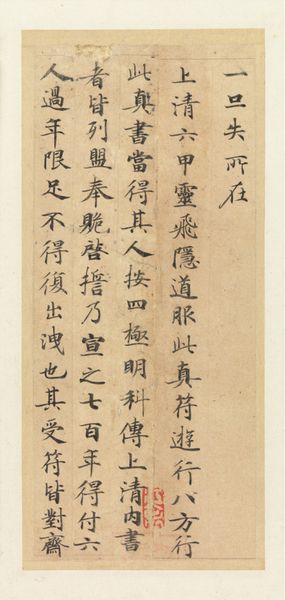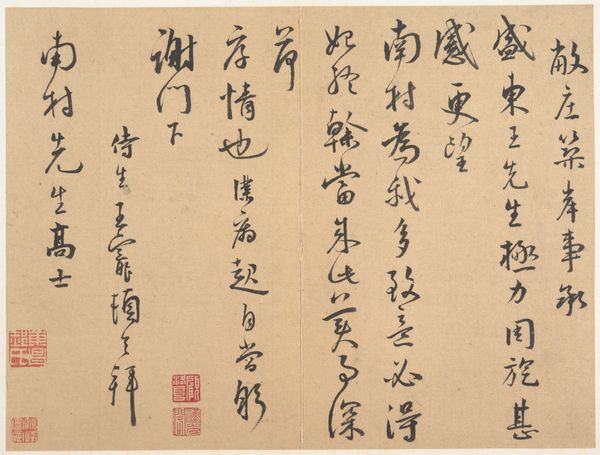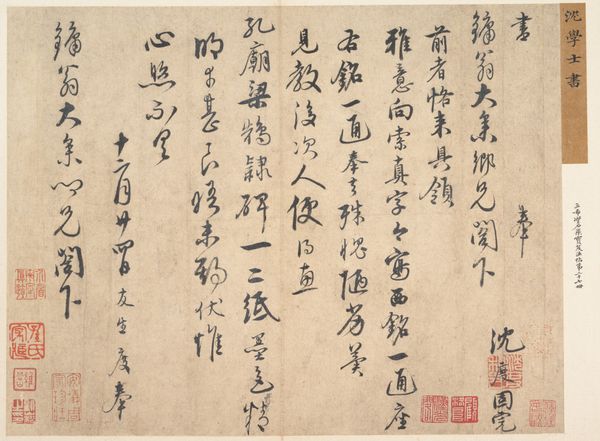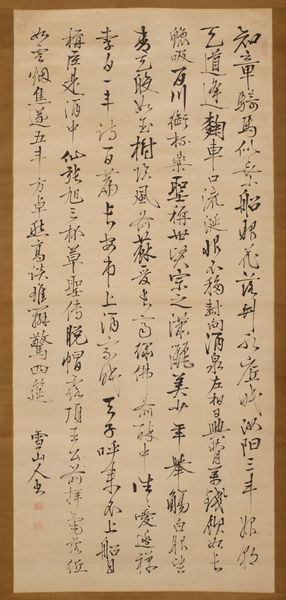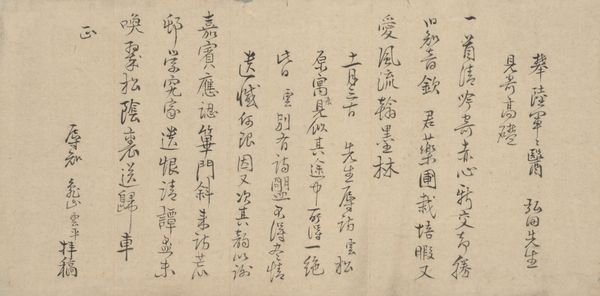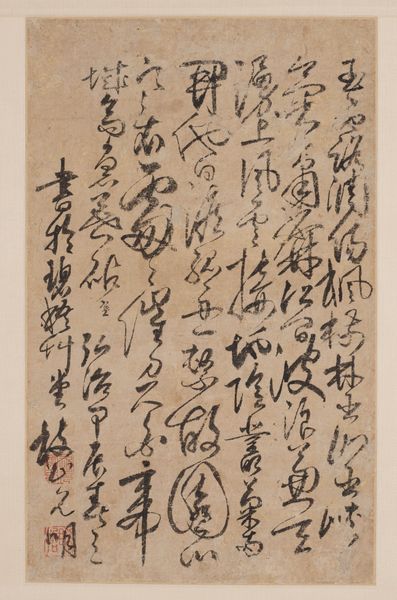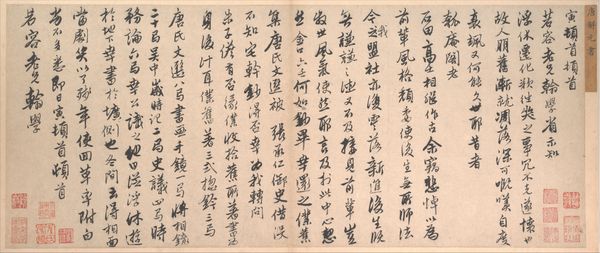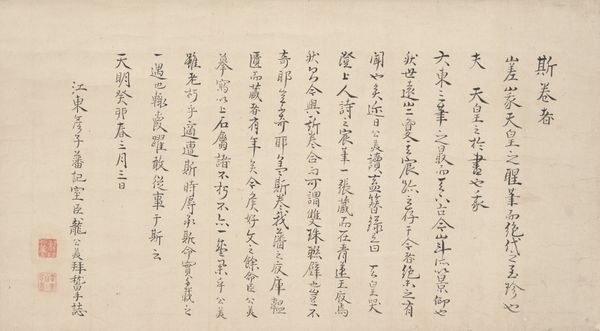
Excerpt from Bai Juyi's "Autobiography of a Master of Drunken Poetry Recitation" 1000 - 1027
0:00
0:00
drawing, paper, ink
#
drawing
#
asian-art
#
paper
#
ink
#
ancient-mediterranean
#
line
#
calligraphy
Dimensions: Image: 10 13/16 × 3 3/8 in. (27.5 × 8.6 cm) Overall with mounting: 53 1/8 × 11 1/16 in. (134.9 × 28.1 cm) Overall with knobs: 53 1/8 × 12 7/8 in. (134.9 × 32.7 cm)
Copyright: Public Domain
Curator: This is an excerpt from Bai Juyi's "Autobiography of a Master of Drunken Poetry Recitation" dating from between 1000 and 1027, crafted by Fujiwara no Yukinari. It resides at the Metropolitan Museum of Art. Editor: My first impression is one of incredible control—the delicate lines create a sense of disciplined grace and fluidity despite what I presume is dense textual content. Curator: Absolutely, Fujiwara no Yukinari, also known as Kōzei, was renowned for his calligraphy. Ink on paper— the choice of these simple, readily available materials speaks volumes about the accessibility of artistic expression at the time. This work moves beyond mere aesthetics. It allows us to ponder who had access to these materials and how that access affected literary output. Editor: The visual balance of the text, though, is really striking. There's an artful rhythm established between the strokes and the empty space. Consider the curvature of the lines; each mark contributes to an overall sensation of sophisticated dynamism. It's like watching a dance. Curator: Considering it’s from such an ancient period, its continued existence really opens up a discussion about preservation. Who commissioned it, and what systems were in place to preserve and disseminate such precious manuscripts? The work exists today because of a history of patronage. Editor: True. The structure definitely draws the eye, doesn’t it? Observe how the artist balances different elements across the surface. Even without knowing the text, one can appreciate the proportional relations. The way that the column seems to hang almost suspended from the top—there’s a sense of weightlessness at play here. Curator: Furthermore, how might social and political events influence access to art materials? For instance, perhaps access shifted based on the ebb and flow of imperial patronage and its reliance on the elite. The production and ownership of these items becomes linked to the power structures of the era. Editor: That's certainly worth pondering, but on purely aesthetic terms, this fragment displays a remarkably complex interplay of line, form and void, an evocative visual melody! Curator: For me, it reveals the story of the social conditions, labor, and the patronage systems necessary for its very existence and endurance. Editor: In the end, perhaps the calligraphy serves as a beautiful cipher for multiple historical and aesthetic realities.
Comments
No comments
Be the first to comment and join the conversation on the ultimate creative platform.
